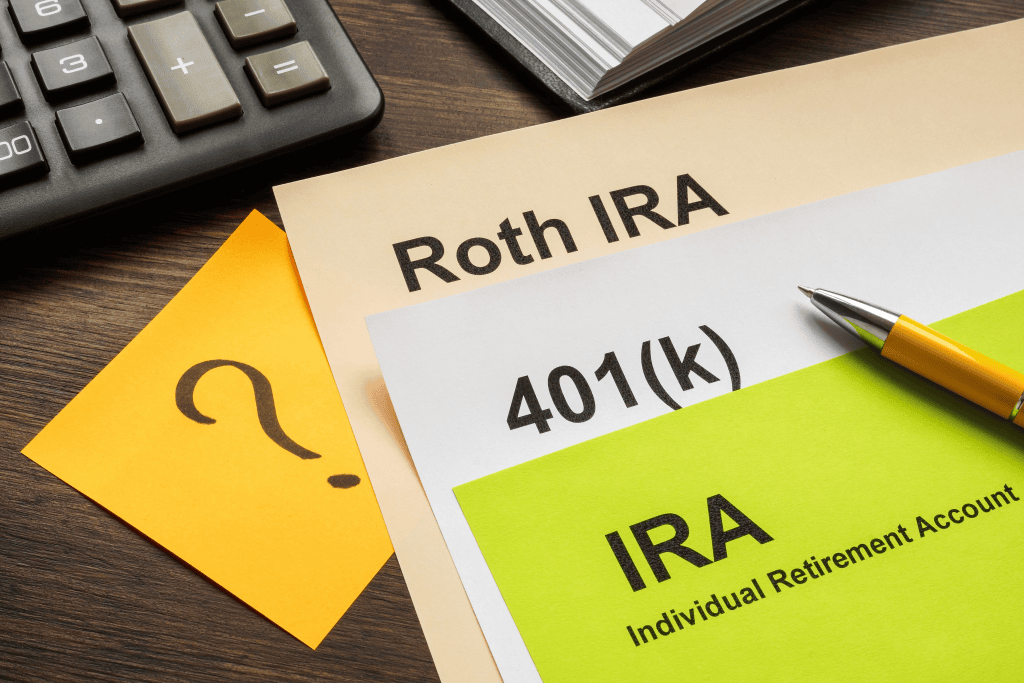The Mega Backdoor Roth IRA stands out as a powerful strategy for high-income earners looking to supercharge their tax-advantaged savings. While the traditional Roth IRA and 401(k) plans offer valuable benefits, the Mega Backdoor Roth IRA takes retirement planning to the next level by allowing individuals to contribute substantial amounts of after-tax dollars and enjoy tax-free growth potential.
The Mega Backdoor Roth IRA leverages a lesser-known provision in certain employer-sponsored retirement plans, such as a 401(k) or 403(b). This strategy only works under unique circumstances which is why so many people who qualify for it have questions about its legitimacy.
Unlike the traditional Backdoor Roth IRA, which involves converting traditional IRA funds into a Roth IRA, the Mega Backdoor Roth IRA allows individuals to make additional after-tax contributions to their workplace retirement account and subsequently roll over these contributions into a Roth IRA.
For Starters
Mega Backdoor Roth IRA offers an alternative option for high-income individuals to transfer funds from a traditional 401(k) or traditional IRA into a Roth IRA.
Once the pre-tax contribution limit is reached, individuals can contribute additional funds on an after-tax basis, subject to the annual contribution limit set by the IRS. Unlike Roth IRA contributions, there are no income limitations on who can undergo a Roth IRA conversion. However, contributions made to a traditional IRA must adhere to the IRS annual contribution limits for the year in which they are made.
Periodically, individuals can roll over their after-tax contributions and any associated earnings into a Roth IRA. This conversion allows the contributions to grow tax-free, providing a valuable opportunity for tax-efficient retirement savings.
How It Works
The mega backdoor Roth strategy enables individuals to transfer a substantial sum, up to $46,500 for 2024, from a traditional 401(k) to a Roth IRA or a Roth 401(k) without incurring the usual taxes associated with such conversions. However, these yearly caps may be reduced by contributions from employers.
As states above, it is important to remember that this approach only works if you have already maximized your annual contributions to both your 401(k) and IRA, and still possess a significant amount of cash that you wish to allocate to a Roth IRA.
Furthermore, eligibility for this strategy requires enrollment in an employer-sponsored traditional 401(k) plan that permits after-tax contributions. Additionally, the plan must allow either in-service withdrawals or i-plan Roth rollovers, which resemble Roth conversions conducted within the plan itself.
Key Considerations and Benefits
Tax-Free Growth: Perhaps the most significant advantage of the Mega Backdoor Roth IRA is the potential for tax-free growth. Unlike traditional retirement accounts, where withdrawals are taxed upon distribution, Roth IRAs offer tax-free withdrawals in retirement, providing valuable tax diversification and flexibility.
No Income Limits: Unlike traditional Roth IRA contributions, which are subject to income limits, the Mega Backdoor Roth IRA is available to high-income earners regardless of their income level.
Estate Planning Benefits: Roth IRAs offer unique estate planning benefits, as they do not have required minimum distributions (RMDs) during the account holder’s lifetime. This allows for tax-free growth to continue for beneficiaries, providing a valuable legacy planning tool.
While the Mega Backdoor Roth IRA offers numerous benefits, it’s essential to consider potential downsides, such as administrative complexities, employer plan restrictions, and the pro-rata rule, which may impact the tax treatment of rollovers if the individual holds both pre-tax and after-tax funds in their retirement accounts.
For clarity let’s add an example:
Let’s say Alexa, a high-income earner, has maxed out her contributions to her employer-sponsored 401(k) and her traditional IRA for the year. However, she still has additional funds she wants to invest for retirement.
Alexa’s employer offers a 401(k) plan that allows after-tax contributions and permits in-service withdrawals or i-plan Roth rollovers. Seeing this as an opportunity, Alexa decides to utilize the mega backdoor Roth IRA strategy.
In 2023, Alexa contributes the maximum allowed amount to her traditional 401(k) through pre-tax contributions, reaching the annual contribution limit. Then, she contributes an additional $43,500 as after-tax contributions, taking advantage of the mega backdoor Roth option provided by her employer’s plan.
Shortly afterward, Alexa initiates an in-service withdrawal or an i-plan Roth rollover, transferring the after-tax contributions from her traditional 401(k) into a Roth IRA. Since she has already paid taxes on these after-tax contributions, there are no additional taxes owed upon conversion.
As a result, Alexa successfully moves a significant amount of funds into her Roth IRA, where they can grow tax-free, providing her with additional retirement savings and potential tax benefits in the future.
We hope this was able to provide some examples and insight to this tax benefit.
The Mega Backdoor Roth IRA details can be confusing, so be sure to contact your tax professional if you have questions.
As always, contact Paragon today if you have questions!





